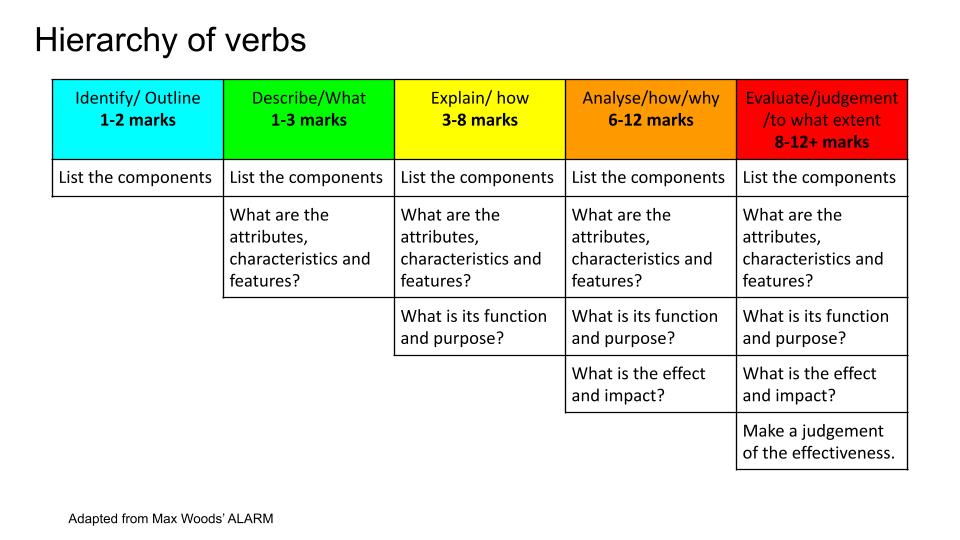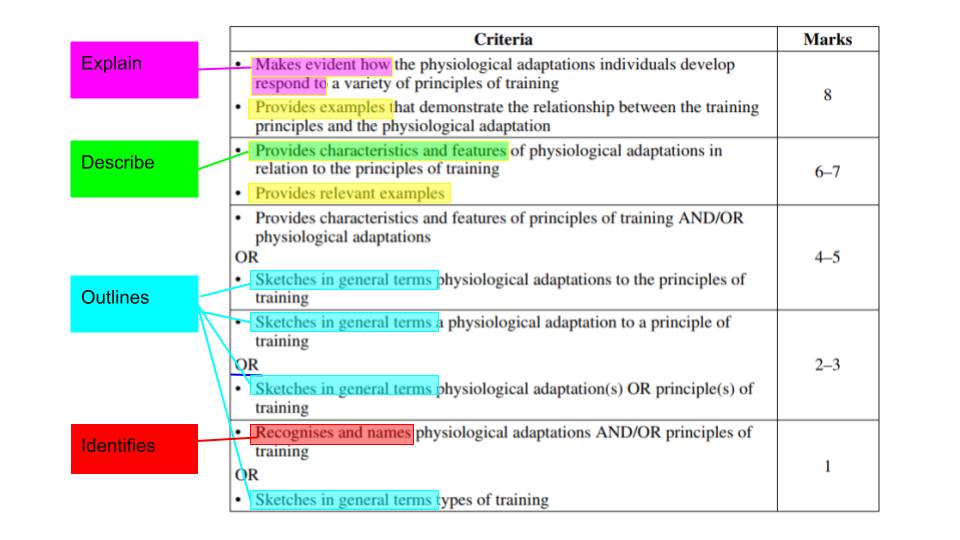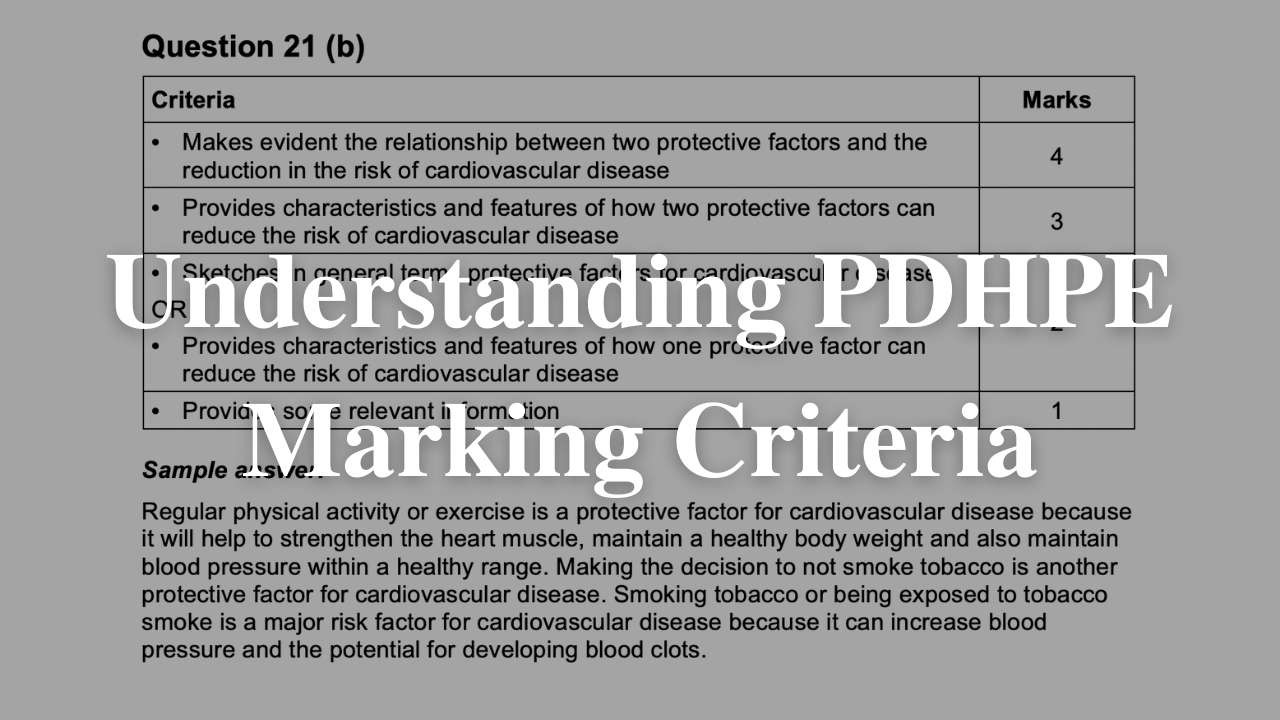Marking criteria follows a very clear pattern in the HSC exam. There is a very clear hierarchy. At the top of this is critically evaluate and at the bottom is identify. The best way to learn how marking criteria work is to understand this hierarchy as well as know the definitions for your key words.
The hierarchy of key words
Let’s start with the hierarchy of key words. The key words NESA provide and which are often used in HSC exams vary in the depth of thinking required in order to answer them and, therefore, the number of marks allocated to them. Some are simple with less marks such as identify or outline, while others require longer answers and are normally worth more marks, such as evaluate or critically analyse.
You can see this hierarchy of terms in the image below, which is based on A Learning and Responding Matrix – aka ALARM.

You can see in this table how the verbs used progress from identify through to evaluate. If we add critically to either evaluate or analyse we are being asked to add a depth of knowledge, reflection, and questioning to them. When we look at a marking criteria we are going to see the highest verb at the top and identify at the bottom.
For example, if you were asked to critically analyse something for 8 marks. The top criteria would be to critically analyse, the next level will just be analyse, before working down to explain or describe and then to outline or identify. Which verbs can depend on the number of distinct criteria sets. Before I show you an actual set of criteria though, we need to make sure we know our definitions of key terms, because they tend to appear more than the key words themselves.
Key word definitions
NESA have a list of key words or verbs which they use in HSC exams in addition to the common terms: who, what, when, where, why, how, and to what extent. It is important you know what these key words mean as it will guide what you write as your answer. NESA have a full list on their website here, but below are some of the main ones used in PDHPE.
- Evaluate – Make a judgement based on criteria; determine the value of
- Assess – Make a judgement of value, quality, outcomes, results or size
- Justify – Support an argument or conclusion
- Analyse – Identify components and the relationship between them; draw out and relate implications
- Discuss – Identify issues and provide points for and/or against (see assess and evaluate)
- Describe – Provide characteristics and features
- Outline – Sketch in general terms; indicate the main features of (see describe)
- Identify – Recognise and name (see describe)
The key words can also be grouped according to what they are asking you to do and often form a hierarchy within the group.
Content
- What
- Describe
- Outline
- Identify
Compare
- Compare and contrast
- Discuss
- Distinguish
- Debate
Connect
- Critically Analyse
- Analyse
- Account for
- Explain
- Why/How
Clarify
- Critically Evaluate
- Evaluate
- To what extent
- Make a judgement
- Justify
- Assess
The benefit of this grouping is you really only need to learn 4 definitions of key terms, not 20. The other is you can better see how verbs connect. For example:
- Often in order to evaluate properly you will need to compare things in order to make your judgement.
- Content is always at the bottom of the marking criteria unless the question only asked you to provide “what” and these are often around the 4 or less mark point.
- Comparing and connecting tend to be the middle range mark allocation between 4 and 8 marks.
- Clarify questions are towards the top 8-12 marks.
With all this out of the way, let’s have a look at an actual set of marking criteria.
Marking criteria
In the image below you can see how the marking criteria moves from an “explain” at the top down to a “describe” and then down to an “outline” and then “identify” at the bottom.

This hierarchy can be seen in every HSC PDHPE Exam question’s marking criteria. Knowing this should help you:
- understand the importance of knowing the definitions of the key terms.
- make sure that you identify the key terms in the questions and then plan your answer accordingly
- be able to re-create the exam marking criteria during the exam to help guide your answers.
- better answer the question, rather than just providing the content (which we see only gets you low marks).
So, here is a study tip. Read through a bunch of old exam questions and see if you can come up with the marking criteria for the question. Then get the criteria and have a look to see how you went.






